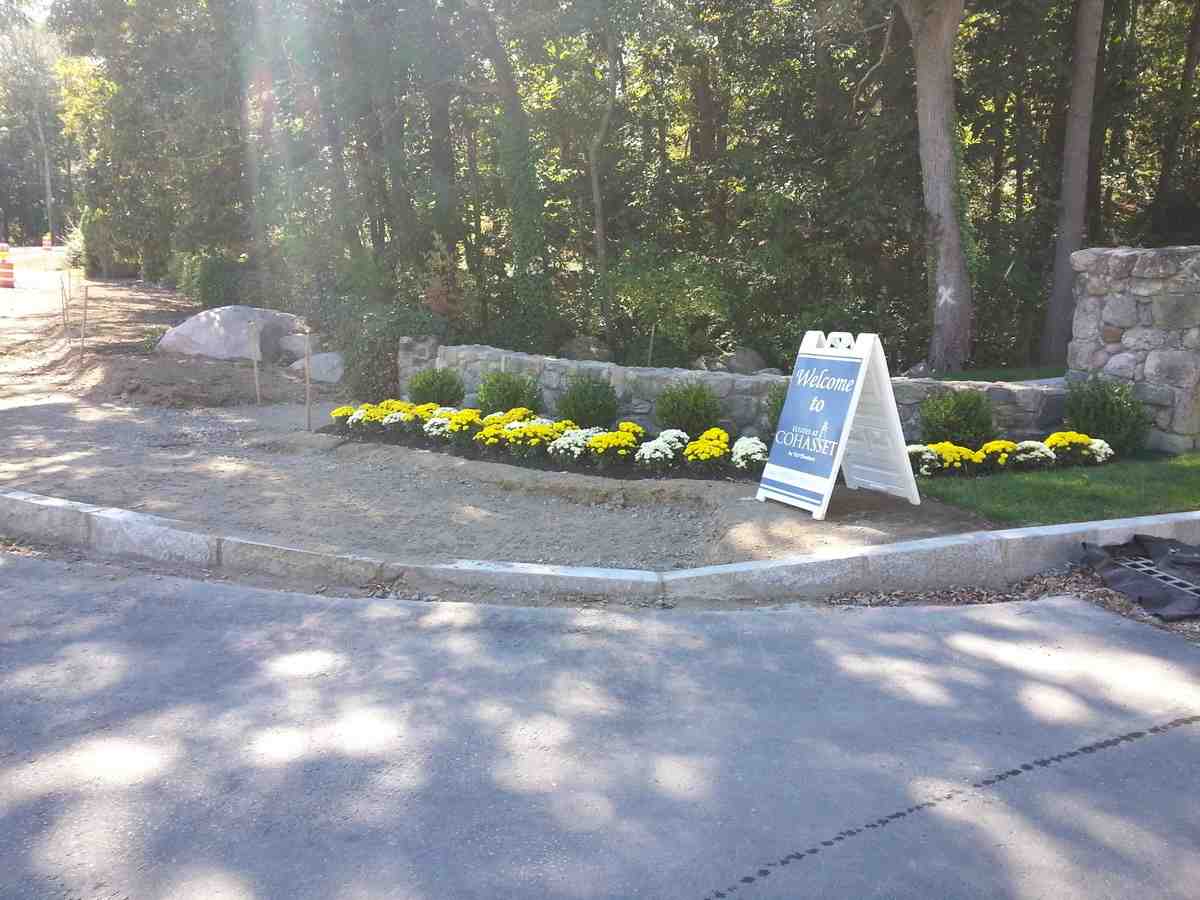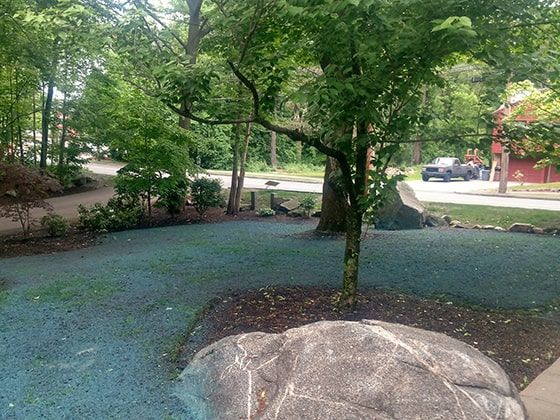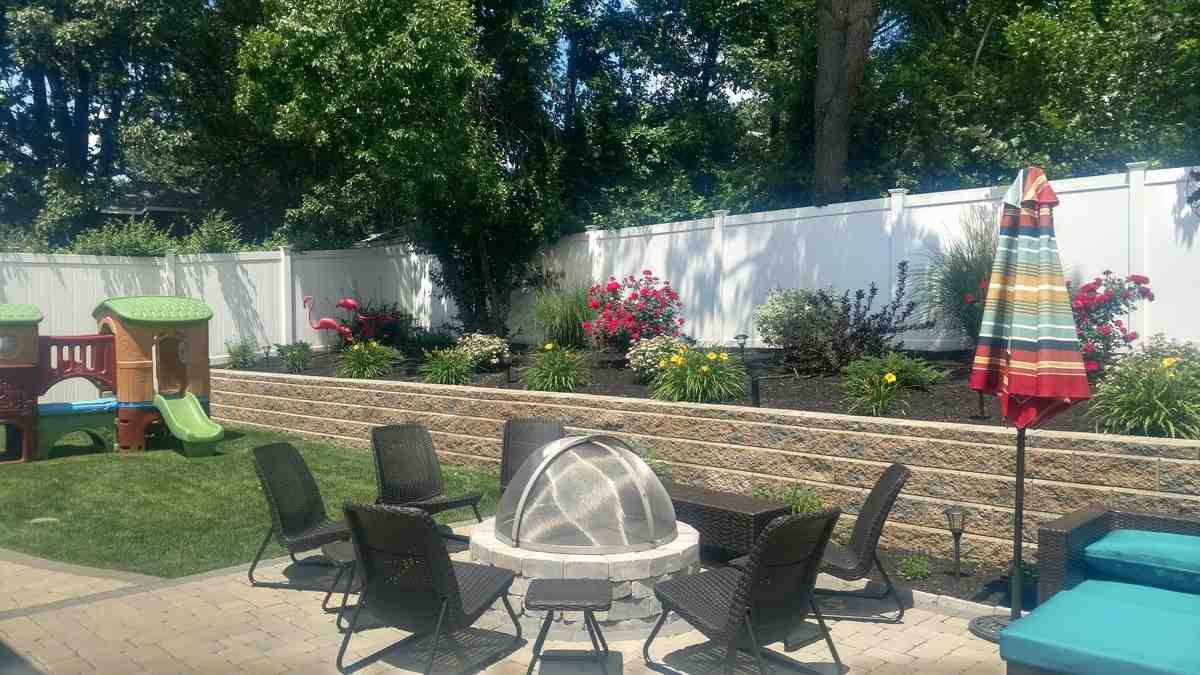The #1 Powerful Guide to Affordable Landscaping Solutions Near Me in 2024
Affordable landscaping near me is a common search for homeowners and property managers looking to improve their outdoor spaces without breaking the bank. To address this search intent directly, here’s a quick breakdown of tips:
- Consider planting low-cost native species.
- Use affordable hardscaping like mulch, gravel, or recycled materials.
- Opt for projects that offer high aesthetic value but are cost-effective.
Affordable Landscaping: Enhancing Your Outdoors Without Breaking the Bank
Landscaping is crucial for creating a welcoming and functional outdoor space. However, the challenge often lies in balancing beauty and affordability. This is especially true when searching for affordable landscaping near me. Landscaping goes beyond aesthetics; it boosts property value, provides a serene environment, and fosters healthier living. But how can it be done on a budget while meeting these goals?
Budget considerations are essential for any landscaping project. From the plants you choose to the hardscaping materials used, every decision impacts your overall costs. Fortunately, there are cost-effective solutions that don’t sacrifice quality or beauty.
Let’s explore practical ways to achieve a stunning landscape affordably. I’m Steve Sylva, with over 25 years of experience in the landscaping industry, specializing in affordable landscaping near me. With my expertise, I aim to guide you through budget-friendly options that can transform your outdoor space effectively and beautifully.

What is Affordable Landscaping?
Affordable landscaping means creating a beautiful and functional outdoor space without breaking the bank. It focuses on cost-effective solutions that add value to your property while staying within your budget.
Definition
Affordable landscaping involves strategic planning and resourceful choices. It includes selecting the right plants, using budget-friendly materials, and employing efficient techniques to improve your outdoor space. The goal is to maximize aesthetic appeal and functionality without overspending.
Cost-Effectiveness
Cost-effectiveness is at the heart of affordable landscaping. This means:
- Choosing Native Plants: Native species are usually less expensive and easier to maintain. They adapt well to local conditions, reducing the need for extra water and fertilizers.
- Using Mulch and Gravel: These materials are affordable and help retain soil moisture, control weeds, and add a polished look to your garden.
- Recycling Materials: Using recycled or repurposed materials for pathways, patios, and garden beds can significantly cut costs.
Value Addition
Investing in affordable landscaping not only improves the beauty of your home but also increases its market value.
Statistics show that landscaping can boost property value by 5% to 15%. A well-maintained yard makes your home more appealing to potential buyers. Even simple additions like a new lawn, flower beds, or a small patio can make a huge difference.
Case Study:
One homeowner in Las Vegas transformed their yard by opting for a mix of drought-resistant plants and gravel pathways. This simple yet effective approach not only saved on water bills but also increased their home’s curb appeal and value.

Affordable landscaping is about making smart choices that bring long-term benefits. By focusing on cost-effective strategies, you can create an outdoor space that is both beautiful and budget-friendly.
Planning Your Landscaping Project on a Budget
Planning your landscaping project on a budget involves careful consideration of costs, resources, and materials. Here’s how to get started:
Budget Planning
Start by determining how much you can afford to spend. Break down your budget into categories like plants, hardscaping, and labor. This will help you allocate funds effectively and avoid overspending.
Cost Estimation
Estimate the costs of your desired features. Research local prices for plants, mulch, gravel, and other materials. Websites like GreenPal can provide insights into local landscaping costs and services.
Resource Allocation
Decide where to allocate your resources. Prioritize essential elements like plants and soil first. If your budget allows, add hardscaping features like pathways or patios later.
Choosing the Right Plants
Selecting the right plants is crucial for a budget-friendly landscape. Opt for native species, drought-resistant plants, and perennials.
Native Species: These plants are adapted to your local climate and soil, reducing the need for extra watering or soil amendments. For example, in Las Vegas, native plants like desert marigold and sagebrush thrive with minimal care.
Drought-Resistant Plants: These plants require less water, saving on irrigation costs. Succulents, cacti, and lavender are excellent choices for dry climates.
Perennials: Unlike annuals, perennials come back year after year, saving you money on replanting. Examples include daylilies and hostas.
Utilizing Affordable Hardscaping Materials
Hardscaping can be expensive, but there are budget-friendly options available.
Mulch: Mulch is not only cost-effective but also helps retain soil moisture and suppress weeds. Choose from organic options like wood chips or inorganic ones like rubber mulch.
Gravel: Gravel is a versatile and affordable material for pathways and garden beds. It’s easy to install and requires little maintenance.
Recycled Materials: Using recycled materials can significantly cut costs. Repurposed bricks or stones can create beautiful garden borders or pathways.
By focusing on these cost-effective strategies, you can plan a beautiful and sustainable landscape without breaking the bank.
Next, we’ll explore key strategies for affordable landscaping near you, including DIY projects and leveraging community resources.
Key Strategies for Affordable Landscaping Near Me
Opting for Mixed Planting Beds
Mixed planting beds are a great way to add diversity and aesthetics to your landscape while keeping costs low. By combining different types of plants, you can create a visually appealing garden that also promotes sustainability.
Diversity: Mixed planting beds include a variety of plants such as perennials, shrubs, and groundcovers. This diversity helps create a more resilient landscape that can better withstand pests and diseases.
Aesthetics: A mixed planting bed provides a rich palette of colors and textures, making your garden look vibrant year-round. Combining plants with different blooming seasons ensures continuous visual interest.
Sustainability: Using native species and drought-resistant plants in mixed beds improves sustainability. These plants are adapted to the local climate and require less water and maintenance. For example, in Las Vegas, NV, choosing native plants like desert marigold or blackfoot daisy can save you money on water and upkeep.
Implementing Xeriscaping
Xeriscaping is a landscaping method designed for water conservation. It involves selecting plants that require minimal irrigation and using design principles that reduce water usage.
Water Conservation: In arid regions like Las Vegas, xeriscaping can significantly reduce water bills. By using plants that thrive in dry conditions, you can maintain a beautiful garden without excessive watering.
Suitable Plants: Choose plants that are well-suited to xeriscaping, such as succulents, cacti, and other drought-tolerant species. These plants not only save water but also add unique textures and colors to your landscape.
Design Principles: Xeriscaping involves strategic planning to maximize water efficiency. Grouping plants with similar water needs together and using mulch to retain soil moisture are key principles. For example, placing mulch 2-3 inches below the surface can help maintain soil moisture effectively.
Leveraging Community Resources
Using community resources can help you find affordable landscaping solutions and gain valuable knowledge.
Local Nurseries: Local nurseries often carry native plants suited for your area’s climate. They can also provide expert advice on plant selection and care. Supporting local businesses can sometimes be more cost-effective than buying from large chains.
Community Resources: Community gardens and local gardening clubs are excellent places to exchange plants, seeds, and gardening tips. These resources can help you save money and learn from experienced gardeners in your area.
DIY Projects
Taking on DIY projects can drastically reduce landscaping costs.
Simple Projects: Start with easy projects like building a small garden bed or installing a drip irrigation system. These tasks can be done over a weekend and require minimal investment.
Learning Opportunities: Online tutorials and local workshops can provide guidance on various DIY landscaping projects. For instance, learning how to install a drip irrigation system can save you money on professional services and reduce water usage.
By integrating these strategies, you can achieve an affordable and beautiful landscape that improves your home’s value and sustainability. Next, we’ll discuss how to maintain your landscape affordably, focusing on effective watering techniques and pruning practices.
Maintaining Your Landscape Affordably
Effective Watering Techniques
Maintaining a lush and healthy landscape in a cost-effective manner requires careful attention to watering practices. Here are some key techniques:
Drip Irrigation:
Drip irrigation systems are highly efficient, delivering water directly to the roots of plants. This minimizes water wastage and ensures that your plants get the moisture they need. Although installation might require some upfront cost, the long-term savings on water bills make it worthwhile. Plus, advanced systems can be operated remotely, adding convenience.
Scheduling:
Watering your landscape at the right time of day can make a significant difference. The best time to water is early in the morning or late in the evening when temperatures are cooler. This reduces evaporation and ensures that water penetrates the soil effectively.
Efficient Systems:
Consider investing in smart irrigation controllers that adjust watering schedules based on weather conditions. These systems can save up to 30% on water usage by preventing overwatering during rainy periods and ensuring adequate moisture during dry spells.
Pruning and Weeding
Proper pruning and weeding are essential for maintaining a healthy and attractive landscape. Here are some best practices and tips:
Regular Maintenance:
Regularly scheduled maintenance can prevent small issues from becoming big problems. For instance, trimming hedges and shrubs keeps them healthy and promotes new growth. Removing weeds promptly prevents them from taking over your garden and competing with desirable plants for nutrients and water.
DIY Care Tips:
You don’t always need professional help for basic landscaping tasks. Simple tools like pruners, shears, and a good pair of gloves can go a long way. Regular hand-weeding and proper mowing practices can effectively manage weeds without relying on harsh chemicals.
Seasonal Adjustments:
Adjust your maintenance practices according to the season. For example, aerating and overseeding your lawn in the fall can help refresh it after the summer heat. Similarly, applying mulch in the spring can help retain soil moisture and suppress weed growth.
Tools Needed:
Invest in a few essential tools to make your maintenance tasks easier. A quality pair of pruners, a weeding tool, and a rake are must-haves for any gardener. For larger properties, consider tools like hedge trimmers and leaf blowers to save time and effort.
Frequency:
The frequency of your maintenance tasks will depend on your specific landscape. However, a general rule of thumb is to prune shrubs and trees at least twice a year and weed as needed. Regular mowing and edging should be done weekly during the growing season to keep your lawn looking its best.
By following these effective watering techniques and pruning practices, you can maintain a beautiful and healthy landscape without breaking the bank. Next, we’ll explore how a well-designed landscape can improve your home’s value and curb appeal.
Enhancing Home Value Through Landscaping
Impact of Well-Designed Landscapes
A well-designed landscape can significantly boost your home’s value. According to Better Homes & Gardens, landscaping can increase your property’s value by 5% to 15%. This is especially true when upgrading from poor to good landscaping conditions.
Curb appeal is one of the main reasons landscaping has such a high return on investment (ROI). A beautiful yard makes a great first impression on potential buyers, making your home more attractive and inviting. Imagine driving up to a house with a lush lawn, vibrant flowers, and well-maintained trees—you’re already halfway to making a sale.

Cost vs. Value in Landscaping Improvements
When considering landscaping improvements, balance costs with the value they add. For example, simple additions like mulching and planting drought-resistant plants can offer immediate visual appeal and long-term benefits without breaking the bank.
ROI on Landscaping: Investing in landscaping can yield an ROI of up to 20%, according to studies. This means that even modest investments in your yard can pay off significantly when you decide to sell your home.
Market Trends: Current trends favor sustainable and low-maintenance landscapes. Xeriscaping, which involves using drought-tolerant plants and efficient irrigation systems, is becoming increasingly popular. This not only saves water but also reduces maintenance costs—an attractive feature for future buyers.

Buyer Attraction: A well-maintained and thoughtfully designed landscape can be a major selling point. Features like outdoor kitchens, water features, and retaining walls add functionality and aesthetic appeal. These improvements make your home stand out in the market, attracting more potential buyers.
Comparative Market Analysis: When evaluating the value of your landscaping, it’s helpful to look at similar homes in your area. Homes with well-designed landscapes often sell for higher prices and spend less time on the market. This comparative advantage can be a decisive factor for buyers.
Visual Appeal: Never underestimate the power of visual appeal. Simple touches like colorful flower beds, neatly trimmed hedges, and attractive hardscaping can make your home more inviting. This immediate improvement can make your property more memorable to buyers.
Long-term Benefits: Investing in quality landscaping has long-term benefits. Properly placed trees and shrubs can improve energy efficiency by providing shade and windbreaks. This reduces heating and cooling costs, making your home more eco-friendly and cost-effective.
Budget Alignment: It’s crucial to align your landscaping projects with your budget. Start with high-impact, low-cost improvements like mulching, planting perennials, and adding gravel pathways. Gradually move to more significant improvements as your budget allows.
By understanding the impact of well-designed landscapes and balancing cost with value, you can make informed decisions that improve your home’s appeal and market value. Next, we’ll explore frequently asked questions about affordable landscaping to help you get started on your project.
Conclusion
In summary, affordable landscaping doesn’t mean compromising on quality or beauty. By focusing on strategic planning, selecting the right plants, and utilizing cost-effective materials, you can create a stunning outdoor space without breaking the bank. The key is to start small and gradually make improvements that align with your budget and needs.
At Steve’s Services Landscape Company, we understand the importance of creating beautiful, sustainable landscapes that add value to your home. Our team is dedicated to providing top-notch, personalized solutions custom to your specific requirements. Whether you’re looking to install a new lawn, upgrade your irrigation system, or simply need regular maintenance, we’ve got you covered.
Ready to transform your outdoor space? Contact us today to get started on your landscaping journey. With over 20 years of experience and a commitment to customer satisfaction, Steve’s Services Landscape Company is your go-to partner for affordable landscaping solutions.
Explore our services and let us help you create the lawn of your dreams. Your perfect landscape is just a call or click away!
Frequently Asked Questions about Affordable Landscaping
How much should I budget for landscaping?
The cost of landscaping can vary greatly based on the scope of your project and your location. On average, you might spend anywhere from $320 to $20,000. However, the national average for a landscaping project is around $2,600. Key factors affecting your budget include:
- Type of plants: Native and drought-resistant plants are often more affordable and require less maintenance.
- Hardscaping elements: Features like patios, walkways, and retaining walls can add to the cost.
- Labor and design: Hiring a professional designer or landscaper may increase costs but can ensure high-quality results.
To get a more accurate estimate, it’s best to contact local landscapers like Steve’s Services Landscape Company and request a free quote.
Does landscaping really increase home value?
Yes, landscaping can significantly boost your home’s value. According to Better Homes & Gardens, improving your landscaping from poor to good condition can increase your home value by 5% to 15%. Here are some ways landscaping can add value:
- Curb appeal: A well-maintained yard makes a great first impression on potential buyers.
- Functional spaces: Adding elements like patios or outdoor kitchens can make your home more appealing.
- Environmental benefits: Features like xeriscaping and native plants can lower maintenance costs, making your property more attractive to eco-conscious buyers.
What are the cheapest plants that are easy to maintain?
Choosing the right plants can save you money and reduce maintenance efforts. Here are some budget-friendly and low-maintenance options:
- Native species: These plants are adapted to your local climate and soil, requiring less water and care.
- Drought-resistant plants: Plants like succulents and ornamental grasses thrive with minimal watering.
- Perennials: Unlike annuals, perennials come back year after year, saving you money on replanting.
For more custom advice, consider consulting with Steve’s Services Landscape Company to find the best affordable landscaping options for your area.
Ready to start your affordable landscaping project? Contact us today to get expert advice and a free estimate. Let’s create a beautiful, budget-friendly landscape together!
